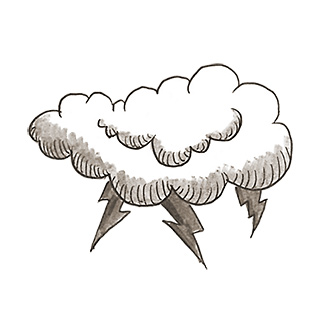
Related Questions
- Does hot water freeze faster than cold water?
- Why does structural behavior change in different types of soil?
- Are there materials that can absorb heat without becoming hot?
- Is fire a solid, a liquid, or a gas?
- What makes wood rot so slowly?
- How does glass change over time?
- Does a golf ball really change its shape when struck by the club?
- Why is mercury liquid at room temperature?
- What are the basic forces behind tape and glue?
- How can a snail crawl upside-down on the underside of the surface of a pond?
Can we safely burn used plastic objects in a domestic fireplace?
No, you can’t. Don’t even think about it…
By Amy BiemillerFireplaces haven’t changed much in hundreds of years. They rarely serve any kind of functional purpose anymore, but they harken back to a time when all domestic heat came from either wood or coal that you burned yourself. To safely burn today’s highly combustible plastic, those fireplaces would need to include technology that would control temperature and emissions, and properly dispose of the residual toxic material. Municipal waste incinerators, which have that technology, are able to burn used plastics and produce energy just like the domestic hearths of old.
“There’s a good reason burning household trash, including plastic, is prohibited in most of the U.S. — the toxic species,” says Noelle Eckley Selin, an assistant professor in MIT’s Engineering Systems Division, as well as the Department of Earth, Atmospheric, and Planetary Sciences. When plastic is burned, it releases dangerous chemicals such as hydrochloric acid, sulfur dioxide, dioxins, furans and heavy metals, as well as particulates. These emissions are known to cause respiratory ailments and stress human immune systems, and they’re potentially carcinogenic.
Theoretically, there are are two alternate paths for disposing of all that old Lego and bubble wrap. The first would be to replace your fireplace with a commercial grade incinerator. “However, this sort of technology would probably be beyond what would be cost-effective or commercially available in even a futuristic domestic fireplace,” Selin notes.
The other alternative doesn’t exist yet, and may never, but what if the future composition of plastic material was different, could home burning be done safely? “If we imagine a future where all plastic has basically the chemical composition of wood or plant material, we still have to be concerned about the definition of ‘safe,’” says Selin. “Even your normal everyday fireplace wood fire creates hazardous emissions, such as particulates, polycyclic aromatic hydrocarbons (PAHs), and other emissions that can be dangerous for health.”
The degree of danger would be compounded by the number of other people who would be burning and producing those emissions. For now and the foreseeable future, recycle — don’t burn — plastic material.
Posted: March 12, 2013